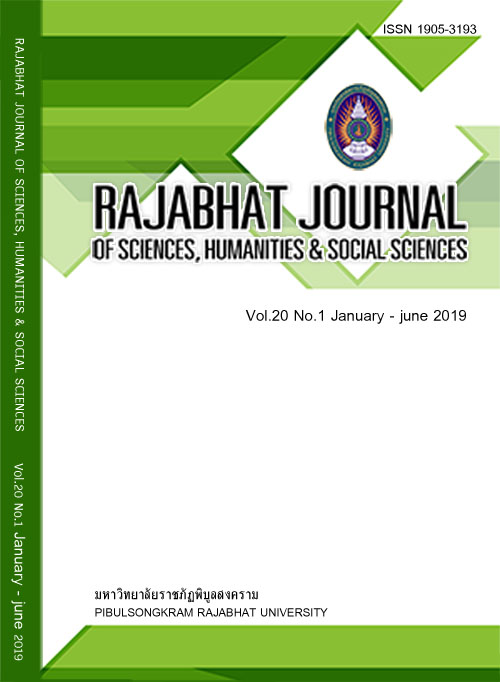ANTI-INFLAMMATORY EFFECT OF NANGLAE AND PHULAE PINEAPPLE PEEL EXTRACT
Keywords:
bromelain, pineapple peel, anti-inflammatory activityAbstract
Inflammation is a process by which tissues respond to foreign organism infection. In the inflammatory process, an important inflammatory mediator was nitric oxide (NO), which causes swelling. Pineapples were an economically grown plant in Chiang Rai province. This study aimed to evaluate protein content, enzyme activity and anti-inflammatory activity of the extract from Nanglae and Phulae pineapple peel. The results showed that the extract of Nanglae pineapple peel had higher protein content and enzyme activity than that of Phulae pineapple peel, 4.56±0.56 mg/ml and 2.03±3.85 unit/ml, respectively. Both of pineapple peel extracts at the concentration of 0-1000 µg/ml did not show cytotoxicity effect in macrophage cells (RAW 264.7) which induced by lipopolysaccharide (LPS) for 24 hours. The analysis of NO inhibitory activity against standard aminoguanidine found that the extraction of Nanglae and Phulae pineapple peels inhibited the formation of nitric oxide, the strength varied depending on the concentration of the extracts. Therefore, both of the pineapple peel extracts showed good protein content, enzyme activity and anti-inflammatory activity. It’s can be used to prevent and treat diseases due to inflammation and other appropriate treatment.
References
Dharma P, Maluegha M, ArisWidodo. The effects of bromelain on angiogenesis, nitric oxide, and matrix metalloproteinase-3 and -9 in rats exposed to electrical burn injury, Wound Medicine. 2015; 9: 5-9.
Gaspani L, Limiroli E, Ferrario P, & Bianchi M. In vivo and in vitro effects of bromelain on PGE (2) and SP concentrations in the inflammatory exudate in rats, Pharmacology. 2002; 65: 83-86.
Guzik TJ, Korbut R, & Adamek-Guzik T. Nitric oxide and superoxide in inflammation and immune regulation, Journal of Physiology and Pharmacology. 2003; 54: 469-487.
Libby P. Inflammatory Mechanisms: The molecular basis of inflammation and disease, Nutrition Reviews. 2007; 65(12): 140-146.
Maurer HR. Bromelain: biochemistry, pharmacology and medical use, Cellular and Molecular Sciences. 2001; 58: 1234-1245.
Mequanint W, Makonnen E, & Urga K. In vivo Anti-inflammatory activities of leaf extracts of Ocimumlamiifolium in mice model, Journal of Ethno pharmacology. 2011; 134: 32-36.
Vall S. Process for the preparation of pineapple stem bromelain, 2007; Available at: https://www.freep atentsonlincom/5106621.html. Accessed September 15, 2017.
Van der Vliet A, Eiserich JP. & Cross CE. Nitric oxide a proinflammatory mediator in Lung Disease, Respiratory Research. 2000; 1: 67-72.
Sudsai T, Wattanapiromsakul C, Nakpheng T. & Tewtrakul S. Evaluation of the Wound Healing Property of Boesenbergia longiflora Rhizomes. Journal of Ethnopharmacology. 2013; 150: 223-231.
Shahid SK, Turakhia NH, Kundra M. & et al. Efficacy and safety of phlogenzym a protease formulation, in sepsis in children, Journal of the Association of Physicians of India. 2002; 50: 527-531.
Vellini M, Desideri D, Milanese A. & et al. Possible involvement of eicosanoids in the pharmacological action of bromelain. Arzneimittelforschung. 1986; 36:110-112.
Wallace, J.M. Nutritional and botanical modulation of the inflammatory cascade eicosanoids, cyclooxygenases, and lipoxygenases as an adjunct in cancer therapy. Integrative Cancer Therapies, 2002; 1: 7-37.
Downloads
Published
How to Cite
Issue
Section
License
Each article is copyrighted © by its author(s) and is published under license from the author(s).










